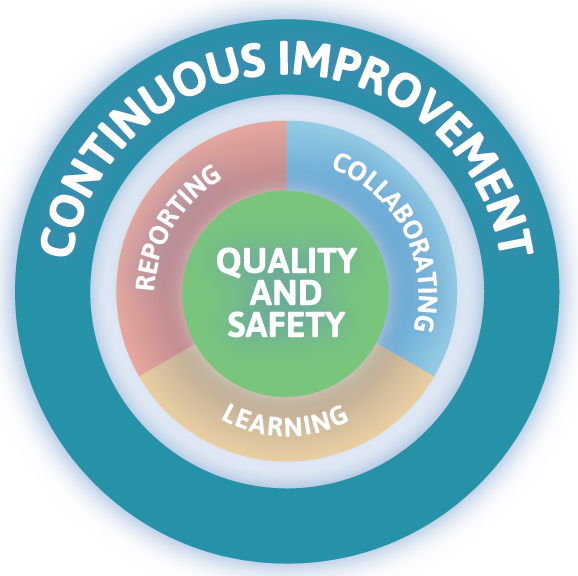

Continuous improvement is a structured process used within a pharmacy that allows for the ongoing review and enhancement of all aspects of care delivery to ensure quality and safety. Instead of focusing on "What's working?", continuous improvement challenges us to consider "Where can we improve?" It addresses quality concerns when they arise but also prioritizes being proactive in assessing risk and acting before harm can occur.
Continuous Improvement involves:
- Regular team meetings where pharmacy staff review incident data, analyze trends, and develop action plans. These meetings must be held at least once a year, with the initial meeting completed before June 1, 2027 (one year after the transition period ends). These meetings provide a structured opportunity for the entire team to reflect on safety concerns, share insights, and collaborate on solutions.
- Safety self-assessments which help pharmacy teams proactively identify potential safety concerns. They are not evaluations or tests, but rather tools that support the team in reflecting on their practices and identifying processes that may contribute to client risk. The initial safety self-assessment must be completed before June 1, 2027 (one year after the transition period ends), with subsequent assessments at least once every three years.
- Systematic review of policies and procedures that are updated in response to incidents, safety assessments, and emerging best practices. This ensures that learning is incorporated into the pharmacy's daily operations.
- Implementation of improvements based on the continuous quality improvement plan for the pharmacy, creating a continuous cycle of improvement.
 Share
Share


